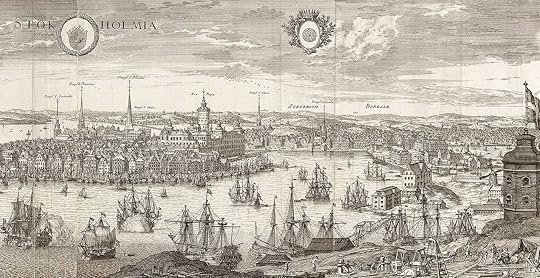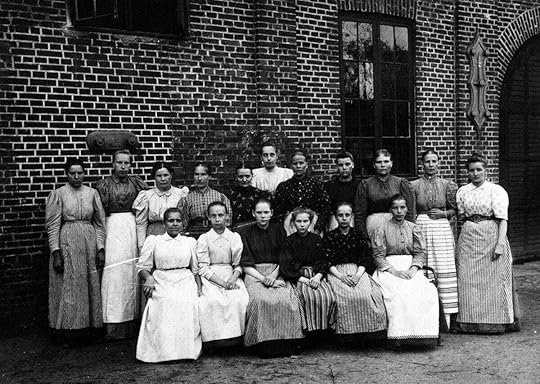“Hunger and needs are the strongest motivators”
 1693 - Stockholm seen from the east from
Suecia antiqua et hodierna
. Source
1693 - Stockholm seen from the east from
Suecia antiqua et hodierna
. SourceDuring the late 1600s and early 1700s, several textile factories emerged in the Swedish capital, Stockholm. One of these factories was overseen by Erik Salander, who also served as a commissioner for the kingdom’s production industries.
Salander was an influential man. He also had a very degrading view of subordinates. The renowned Swedish author Per Anders Fogelström, described the man as follows:
“Salander was a stern figure, managing his employees like a herd of cattle. As an economist, his views are documented. Salander believed that workers should be “impoverished” to work diligently, asserting that “hunger and needs are the strongest motivators.” He advocated for keeping food prices high to prevent workers from becoming lazy. Their children were not to receive education; they were “nurtured from infancy for labor and hardship.” If they were indulged, they would become “useless for factory work.” According to Salander, a child could begin working and earning their bread by the age of six or seven.”
In other words, Salander believed that anyone desperate to survive would outperform those less desperate. During these times, employees worked between 12 – 14 hours a day, 6 days a week, and could be whipped if they didn’t work hard enough.
After he died in 1764, an increasing number of business owners found that Salander had been wrong. Keeping employees desperate and starving did not improve productivity. Quite the opposite.
During the next 200 years, work-life slowly improved for most people. In 1911, Frederick Taylor published his renowned book The Principles of Scientific Management. Now, Taylor has been criticized for promoting micromanagement, but he also believed that employees could be motivated to work harder. In his book, he gave managers the advice to pay top-performing employees a higher salary. This, he argued, would inspire other workers to increase their productivity.
 Photo by Källman. Textile workers' at Alingsås cotton weavers' old factory 1862. Source
Photo by Källman. Textile workers' at Alingsås cotton weavers' old factory 1862. SourceTowards the end of the 1900s, research had shown that intrinsically motivated individuals are far more productive than those motivated by external factors like higher salaries or bonuses.
Today, an increasing number of companies are abandoning traditional management structures altogether. These businesses rely entirely on structures and employees' intrinsic motivation. What the future will look like remains unclear, but I believe that as we deepen our understanding of humanity's innate collaborative abilities, we'll significantly enhance the efficiency and effectiveness of our work environments.



